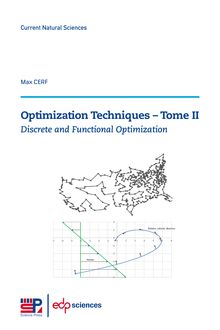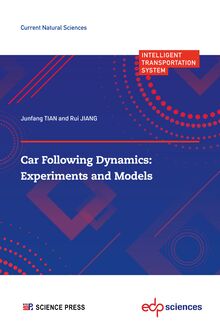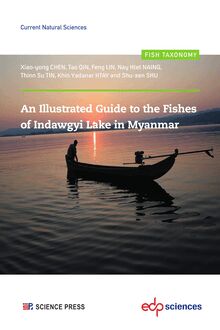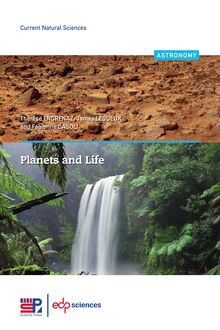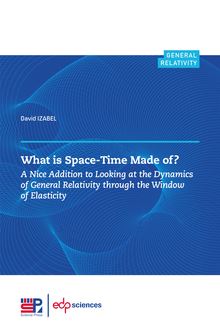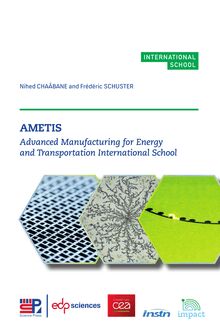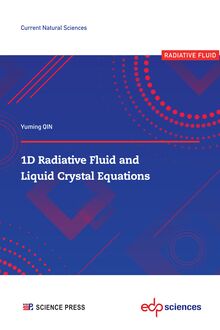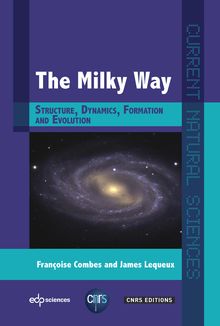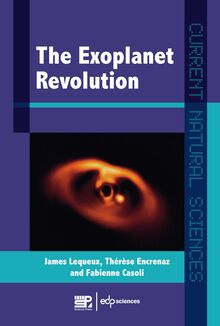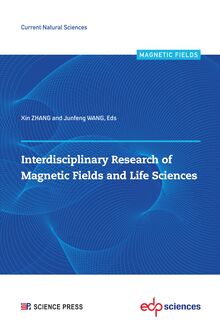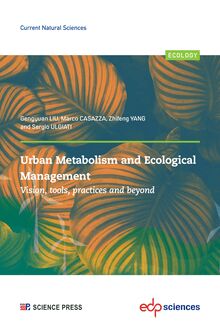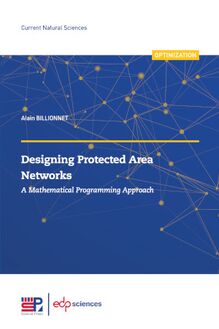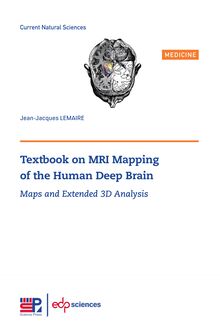-
 Univers
Univers
-
 Ebooks
Ebooks
-
 Livres audio
Livres audio
-
 Presse
Presse
-
 Podcasts
Podcasts
-
 BD
BD
-
 Documents
Documents
-
- Cours
- Révisions
- Ressources pédagogiques
- Sciences de l’éducation
- Manuels scolaires
- Langues
- Travaux de classe
- Annales de BEP
- Etudes supérieures
- Maternelle et primaire
- Fiches de lecture
- Orientation scolaire
- Méthodologie
- Corrigés de devoir
- Annales d’examens et concours
- Annales du bac
- Annales du brevet
- Rapports de stage
La lecture à portée de main
Découvre YouScribe en t'inscrivant gratuitement
Je m'inscrisEcology of Fish Community: Niche Modeling Based on Fish Morphological Parameters , livre ebook
Découvre YouScribe en t'inscrivant gratuitement
Je m'inscrisEn savoir plus
En savoir plus

Description
This book introduces a monograph deconstructing morphological model of river fish communities. It provides a new method and develops morphological modeling, software analysis, and applications for studies of fish community niches. Over long-term evolution, fish interactions with their environment can result in the formation of new species, the exploitation of various ecological niches, and the development of species communities. Although the organisms in the ancient fish can be recognized through their fossils, the niche composition of fish communities 200 years ago remains unknown. The lack of data on the evolution of ecosystem structure and function become an obstacle in the studies of ecology. The purpose of this book is to establish a systematic method for determining niches based on species morphology and the morphological characters of fish communities, as well as to discuss the niche composition of community species through historical records of “qualitative” species. This book attempts to provide a method to clarify community species structure in a given ecosystem and to establish a standard for evaluating ecosystem changes based on community species structure. This book provides a community structure reference system for river ecosystem assessment and restoration based on natural attributes. Using fish morphological data, we established a model for fish community studies based on morphological characters. This book also examines the relationships between fish species in communities from the perspective of ecological niches, and it attempts to establish a fish community research tool for the ecological restoration of rivers.
Introduction................................................. V
Foreword ...................................................XI
CHAPTER 1
Fish Communities and River Ecosystems........................... 1
1.1 Species ................................................4
1.1.1 Species Classification................................ 4
1.1.2 Fish ............................................. 5
1.1.3 Morphological Characters for Classification............... 5
1.2 Community .............................................8
1.2.1 Composition ....................................... 8
1.2.2 Proportion ........................................ 9
1.2.3 Structure ......................................... 9
1.2.4 Community Habitat ................................. 9
1.2.5 Environment ...................................... 9
1.2.6 Ecological Characters ................................10
1.2.7 Spatial Pattern.....................................10
1.2.8 Temporal Characteristics .............................10
1.3 Niche .................................................10
1.3.1 Ideal Niche ........................................11
1.3.2 Real Niche ........................................ 12
1.3.3 Conservation ...................................... 12
1.3.4 Multidimensionality .................................12
1.3.5 Overlap .......................................... 12
1.3.6 Niche Breadth ..................................... 12
1.3.7 Ecological Equivalents ...............................12
1.3.8 Coincident Species ..................................13
1.3.9 Species Evolution and Niche........................... 13
1.4 River Ecosystem Elements................................. 13
1.4.1 Water Chemistry ................................... 14
1.4.2 Water Quality ..................................... 14
1.4.3 Aquatic Life .......................................15
1.4.4 Organic Detritus ...................................16
1.4.5 Productivity of Water Bodies.......................... 16
1.4.6 Trophic Level ......................................17
1.4.7 Natural Balance ....................................17
1.4.8 Water Pollution ....................................17
1.4.9 Algal Blooms ...................................... 17
1.5 Freshwater Fish......................................... 18
1.5.1 Global Freshwater Fish Communities.................... 18
1.5.2 Community Characteristics of Freshwater Fish in China...... 20
CHAPTER 2
Fish Morphological Models and Mechanisms......................... 25
2.1 Multivariate Statistics..................................... 28
2.1.1 Regression Analysis .................................29
2.1.2 Linear Discriminant Analysis.......................... 29
2.1.3 Cluster Analysis ....................................29
2.1.4 Principal Component Analysis (PCA) ...................30
2.1.5 Correspondence Analysis .............................30
2.1.6 Factor Analysis ....................................30
2.1.7 Canonical Correlation Analysis......................... 30
2.2 Morphological Data Model................................. 31
2.2.1 Data Source ....................................... 32
2.2.2 Data Matrix ....................................... 32
2.2.3 Principles of the Correspondence Analysis Model........... 36
2.2.4 Contribution to Variance .............................37
2.2.5 Graph Representation of the Interspecific Relationships
Within Fish Communities............................. 38
2.3 The Model .............................................42
2.3.1 Species Relationship Model ...........................45
2.3.2 Character Fitness ...................................50
2.3.3 Applicability of New Species........................... 50
2.4 Examples of Model Application.............................. 51
2.4.1 Characterization of Community Species Relationships....... 51
2.4.2 Determining the Ideal Niche........................... 56
2.4.3 Iteration ..........................................62
2.4.4 Sample Iteration Order...............................64
2.4.5 Sample Iteration Constraints.......................... 65
2.4.6 Sample Normalization ...............................65
2.4.7 Model Checking .................................... 65
2.4.8 Model Workflow .................................... 65
2.4.9 Model Application and Limitations..................... 67
2.5 The Modeling Software.................................... 69
2.5.1 Data File and Editing ...............................69
2.5.2 Run ............................................. 71
CHAPTER 3
Relationship Between Community Structure and Species Succession ....... 73
3.1 Simulations of Species Removal.............................. 76
3.1.1 Osmeriformes Lcucosoma chinensis (Osbeck, 1765).......... 77
3.1.2 Cypriniformes...................................... 77
3.1.3 Siluriformes, Bagridae ...............................144
3.1.4 Perciformes .......................................150
3.1.5 Tetraodontiformes ..................................156
3.2 Simulated Community ....................................156
3.2.1 Niche Composition ..................................156
3.2.2 Niche Change ......................................160
CHAPTER 4
Relationship Between Community Niche and Succession................ 165
4.1 Characteristics of Community Stability........................ 167
4.1.1 Species Substitutability.............................. 171
4.1.2 Community Cohesion ................................171
4.1.3 Community Integration ..............................174
4.1.4 Characteristics of the Geographic Distribution
of the Ecological Niche Response ....................... 180
4.1.5 Differences ........................................187
4.1.6 Feeding Habits .....................................193
4.2 “Subunit Community” Succession............................ 198
4.2.1 Niche Changes in the “Subunit Community”.............. 201
4.2.2 Simulated Community Performance After Species Removal... 220
4.2.3 The Evolutionary Characteristics of the “Subunit
Communities” ..................................... 225
CHAPTER 5
Fish Community Reconstruction and Case Study..................... 231
5.1 River Ecosystems........................................ 232
5.1.1 River Structure ....................................233
5.1.2 River Ecological Function............................. 234
5.1.3 Composition of the Fish Diet.......................... 236
5.1.4 Fish Trophic Levels .................................242
5.2 Molecular Mechanisms of Energy Utilization and Ecological Niche ... 250
5.2.1 Fish Amylase ......................................251
5.2.2 Gene Sequence and Niche .............................253
5.2.3 Amylase Gene Transcription and Animal Feeding Habits..... 254
5.3 Species Selection for Community Construction.................. 255
5.3.1 Multispecies Model ..................................260
5.3.2 The Food Chain is Fully Functional..................... 262
5.3.3 Species Compatibility ................................264
5.4 Examples of Model Application.............................. 267
5.4.1 Relationship Between Model “Potential” and Community
Abundance ........................................ 267
5.4.2 Environmental Impact Analysis Reference Frame........... 271
5.4.3 Analysis of the Niche of the Artificial Community.......... 273
References.................................................. 275
Sujets
Informations
| Publié par | EDP Sciences |
| Date de parution | 21 décembre 2023 |
| Nombre de lectures | 0 |
| EAN13 | 9782759831159 |
| Langue | English |
| Poids de l'ouvrage | 56 Mo |
Informations légales : prix de location à la page 1,4300€. Cette information est donnée uniquement à titre indicatif conformément à la législation en vigueur.
Extrait
-
 Univers
Univers
-
 Ebooks
Ebooks
-
 Livres audio
Livres audio
-
 Presse
Presse
-
 Podcasts
Podcasts
-
 BD
BD
-
 Documents
Documents
-
Jeunesse
-
Littérature
-
Ressources professionnelles
-
Santé et bien-être
-
Savoirs
-
Education
-
Loisirs et hobbies
-
Art, musique et cinéma
-
Actualité et débat de société
-
Jeunesse
-
Littérature
-
Ressources professionnelles
-
Santé et bien-être
-
Savoirs
-
Education
-
Loisirs et hobbies
-
Art, musique et cinéma
-
Actualité et débat de société
-
Actualités
-
Lifestyle
-
Presse jeunesse
-
Presse professionnelle
-
Pratique
-
Presse sportive
-
Presse internationale
-
Culture & Médias
-
Action et Aventures
-
Science-fiction et Fantasy
-
Société
-
Jeunesse
-
Littérature
-
Ressources professionnelles
-
Santé et bien-être
-
Savoirs
-
Education
-
Loisirs et hobbies
-
Art, musique et cinéma
-
Actualité et débat de société
- Cours
- Révisions
- Ressources pédagogiques
- Sciences de l’éducation
- Manuels scolaires
- Langues
- Travaux de classe
- Annales de BEP
- Etudes supérieures
- Maternelle et primaire
- Fiches de lecture
- Orientation scolaire
- Méthodologie
- Corrigés de devoir
- Annales d’examens et concours
- Annales du bac
- Annales du brevet
- Rapports de stage
